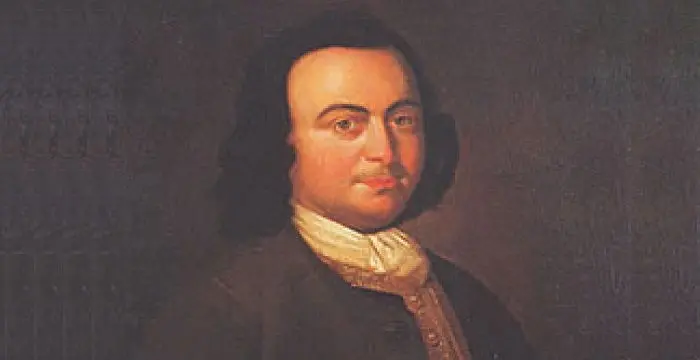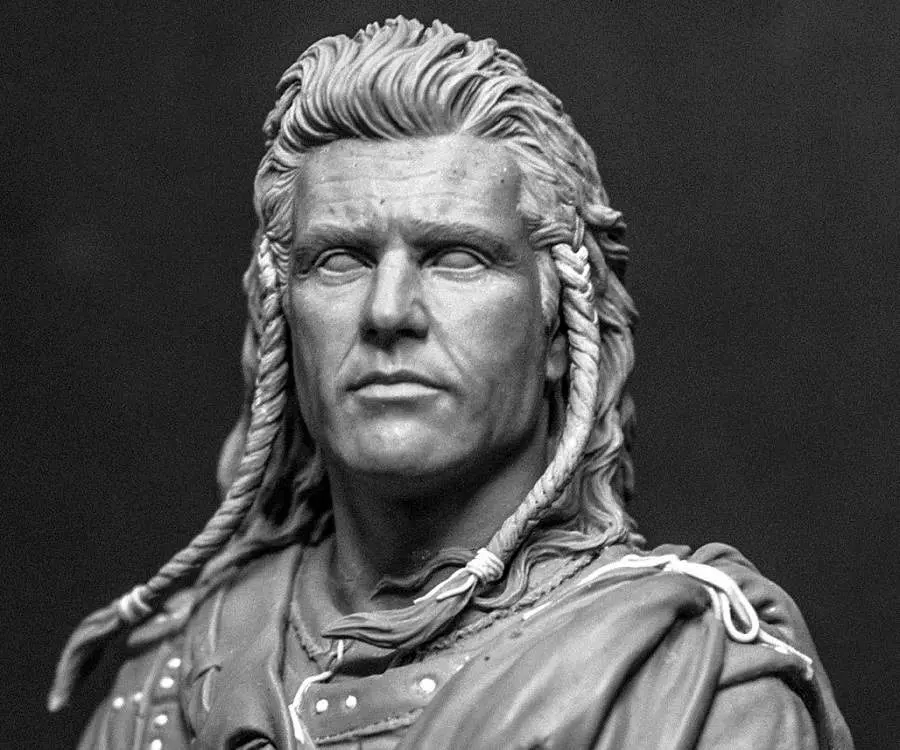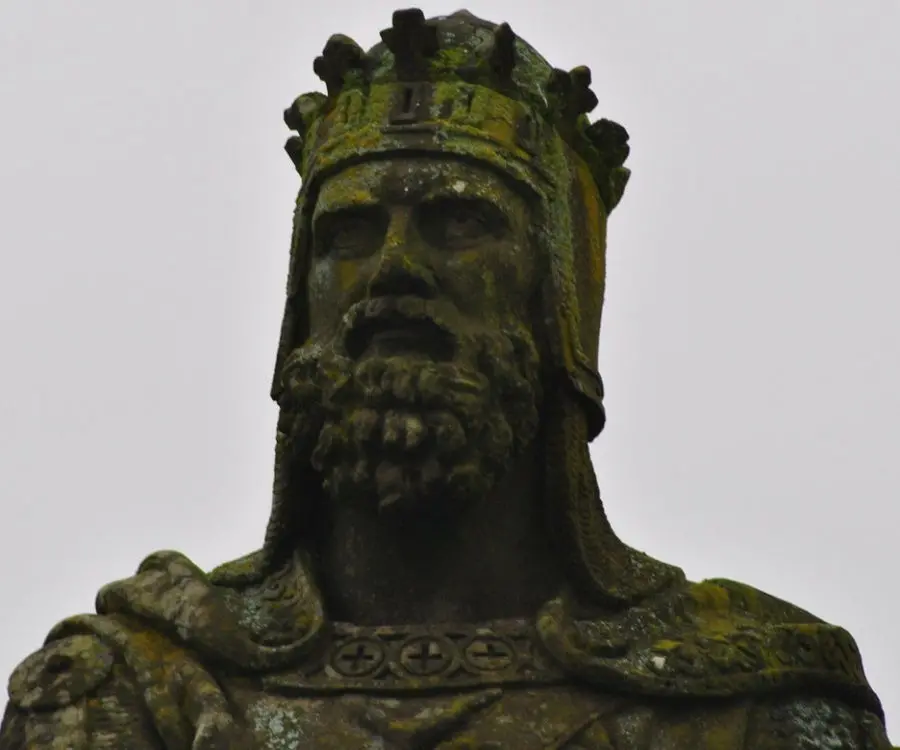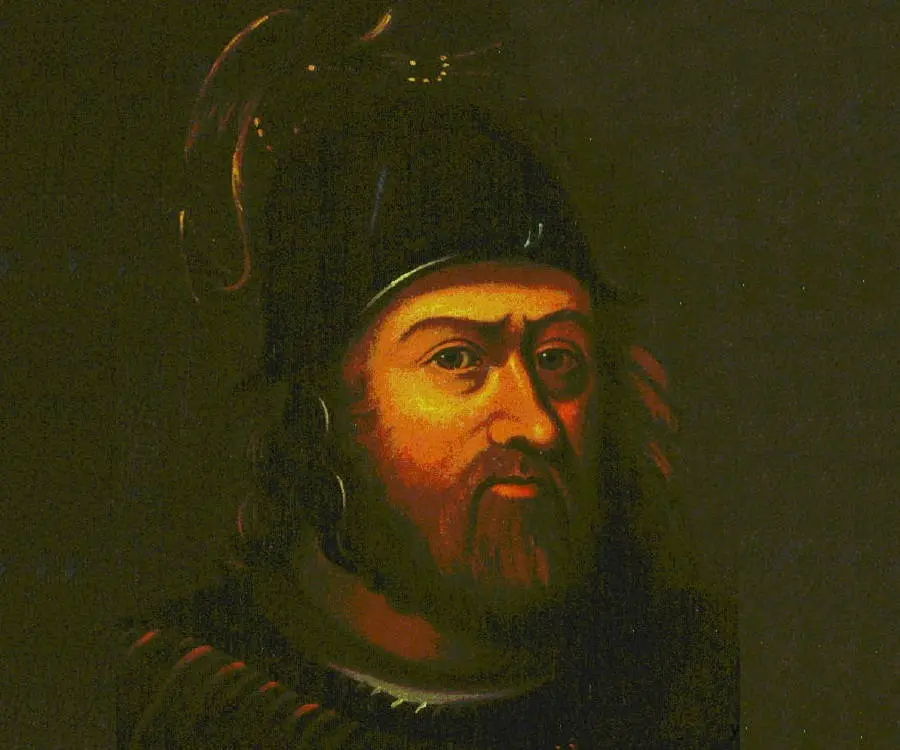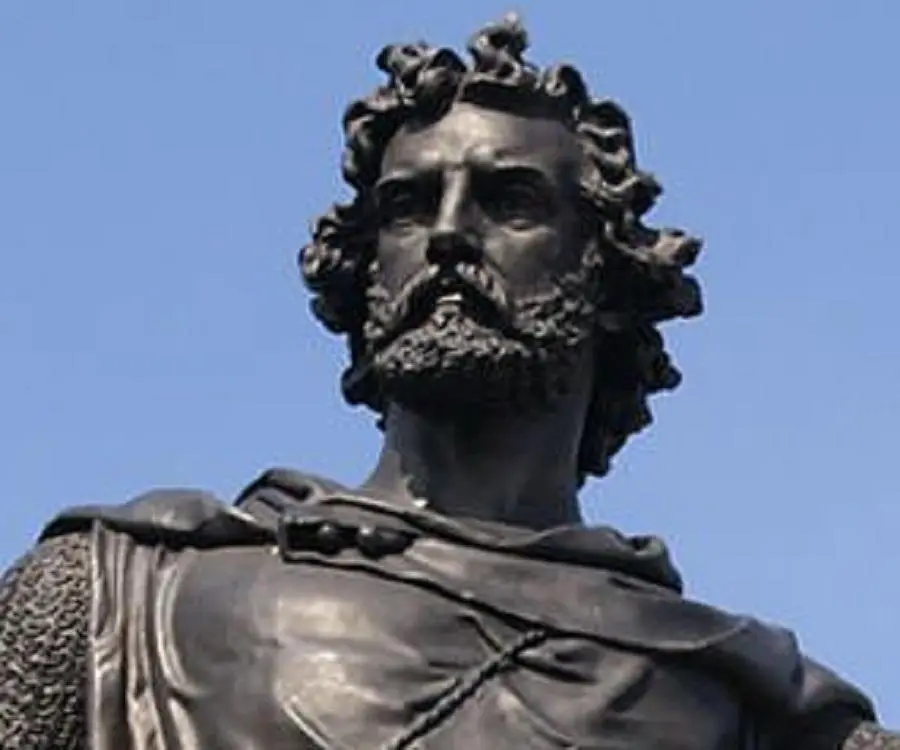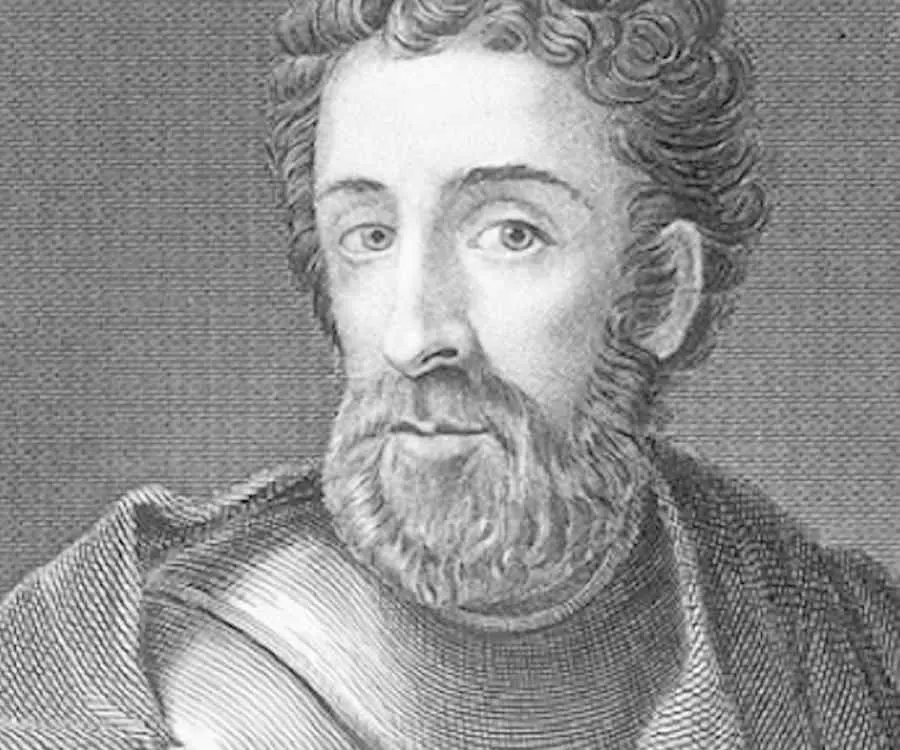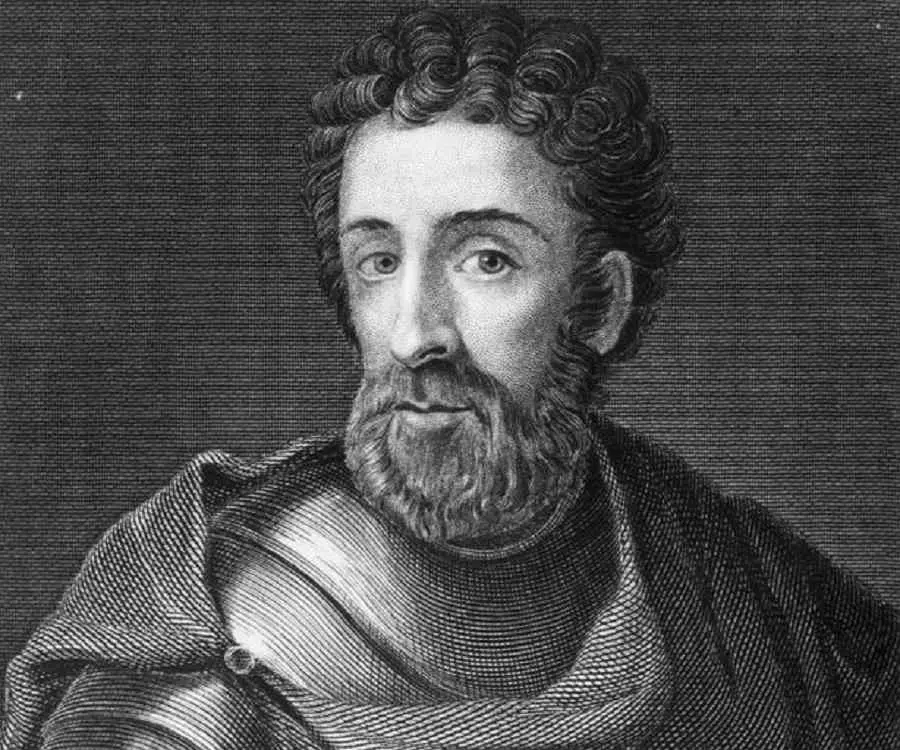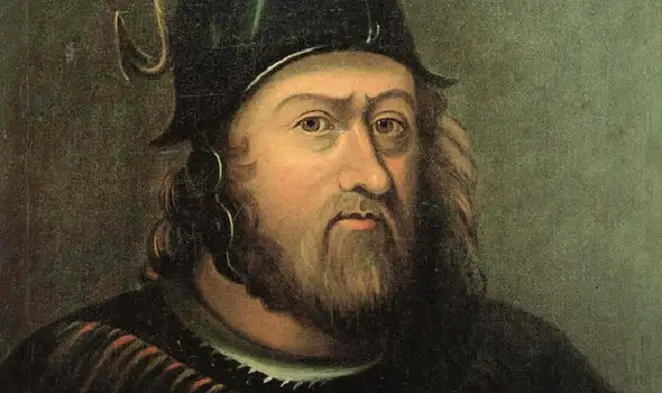
William Wallace - De Facto Ruler of Scotland, Family and Childhood
William Wallace's Personal Details
William Wallace was a Scottish knight who was a central figure in the Wars of Scottish Independence
| Information | Detail |
|---|---|
| Birthday | 1270 |
| Died on | August 23, 1305 |
| Nationality | Scottish |
| Famous | Philosophers, Leaders, Revolutionaries, Military Leaders, De Facto Ruler of Scotland, Knight, Patriot, Revolutionary Fighter |
| Siblings | John Wallace, Malcolm II Wallace |
| Cause of death |
|
| Birth Place | Elderslie |
| Gender | Male |
| Father | Malcolm Wallace |
| Born in | Elderslie |
| Famous as | Patriot, Revolutionary Fighter, Knight, De facto Ruler of Scotland |
| Died at Age | 35 |
// Famous Patriot
George Mason
George Mason was an American statesman and a delegate to the U.S. Constitutional Convention. Explore this biography to learn more about his childhood, life, works, achievements and timeline.
William Wallace's photo
Who is William Wallace?
William Wallace was a Scottish knight who was a central figure in the Wars of Scottish Independence. Regarded as one of Scotland’s greatest national heroes, he led the Scottish resistance forces during the early years of Scotland’s struggle for independence from English rule. Wallace grew up during the reign of King Alexander III of Scotland which was marked by peace and economic stability. But, chaos regarding the inheritance of the throne ensued after the king’s untimely death before John Balliol was named the king. However, King Edward I of England deposed and imprisoned the Scottish king and declared himself the ruler of Scotland. The citizens started resisting the rule of the English king and William Wallace gathered a group of men and burned the Scottish town of Lanark and killed its English sheriff. He then recruited a bigger army and began attacking the English forces, emerging as one of the main leaders during the Wars of Scottish Independence. Along with Andrew Moray, Wallace defeated an English army at the Battle of Stirling Bridge in September 1297. In this battle, Wallace’s forces were greatly outnumbered by the English armies, yet he managed to achieve a resounding victory. Appointed the Guardian of Scotland, he fought the English with great valor till the very end when he was captured and executed brutally on charges of high treason.
Childhood & Early Life
William Wallace was born circa 1270 in Elderslie, Renfrewshire, Scotland, as a member of the lesser nobility. Not much is known about his parentage or place of birth. Some sources state that his father was Sir Malcolm of Elderslie while William’s own seal gives his father’s name as Alan Wallace. It is however known from certain other sources that he had two brothers called Malcolm and John.
There are records that claim that members of Wallace’s family held estates at Riccarton, Tarbolton, and Auchincruive in Kyle, and Stenton in East Lothian, and were vassals of James Stewart, 5th High Steward of Scotland.
Wallace grew up during the reign of King Alexander III of Scotland which was a period of peace and economic stability. The king, however, died in a horse riding accident on 19 March 1286. The heir to the throne was Alexander's granddaughter, Margaret, Maid of Norway, who was still a child. Thus the Scottish lords set up a government of guardians to rule on her behalf until she came of age.
Four years later, Margaret fell ill on the voyage to Scotland and died in Orkney on 26 September 1290. This left Scotland without a direct heir to the throne and several families laid claim to the throne.
A period of chaos ensued and it was feared that Scotland would enter into civil war. The Scottish nobility invited King Edward I of England to arbitrate. Edward first proclaimed himself the Lord Paramount of Scotland and insisted that all contenders recognize him. Finally in November 1292, a feudal court was held in the castle at Berwick-upon-Tweed and it was adjudged that John Balliol had the strongest claim in law to the throne and thus he was made the king.
John, however, proved to be a weak king and gained the ignominious names of "Toom Tabard" or "Empty Coat". Making use of the opportunity, King Edward I stormed Berwick-upon-Tweed in 1296 and went on to defeat the Scots at the Battle of Dunbar in East Lothian. He then forced John to abdicate the throne and took over the control of Scotland in his hands and declared himself ruler of Scotland.
Military Campaigns
Many of the Scottish citizens were unhappy with this development and people protested against the English rule sporadically. In May 1297, William Wallace gathered a group of around 30 men and burned the Scottish town of Lanark, killing William de Heselrig, the English High Sheriff of Lanark.
He then joined William the Hardy, Lord of Douglas, and they carried out the raid of Scone. At that time, several rebellions were taking place in Scotland, including the ones led by Andrew Moray in the North.
Wallace and Moray, who each led separate rebellions in the beginning met and combined their forces. Together they led an army in September 1297 and faced English army under John de Warenne, earl of Surrey, at the Forth near Stirling.
The English army, with 3,000 cavalry and 8,000 to 10,000 infantrymen vastly outnumbered the Scottish forces. However, the shrewd Scottish leader came up with a plan to outwit the English. To reach the Scottish forces, the English would have to first cross over to the north side of the river Forth using a narrow bridge.
The bridge was so narrow that only a few men could cross it at a time. Keeping this detail in mind, Wallace and Moray placed the Scottish forces strategically, and let about half of the English soldiers cross over, giving the English the false impression that it was safe to cross over the bridge.
The English fell into this trap, and as soon as the latter half of the soldiers began crossing, the Scots attacked them quickly and killed them as soon as they crossed. One of Wallace’s captains led a valiant charge that forced some of the English soldiers to retreat as others pushed forward on the bridge. The bridge gave way under the overwhelming weight of the English soldiers and many of them drowned in the river below. Thus Wallace and Moray were able to secure a resounding victory for Scotland.
This victory over the English boosted the morale of the citizens involved in Scotland’s struggle for independence. The humiliating defeat of the English forces ensured that Scotland was nearly free of occupying English armies for a while.
After the battle, both Moray and Wallace were given the title of Guardian of the Kingdom of Scotland on behalf of King John Balliol. The brave Moray however died of the wounds suffered on the battlefield in late 1297.
Around November 1297, Wallace invaded northern England and ravaged Northumberland and Cumberland counties. He was known for his brutality towards the English and he reportedly skinned a dead English soldier and kept his skin as a trophy.
Towards the end of the year, Wallace was knighted in a ceremony, at the 'Kirk o' the Forest'.
Wallace’s victories over the English revealed a lot about his moral character. The opportunistic tactics employed by Wallace greatly departed from the contemporary views on chivalric warfare which were characterized by strength of arms and knightly combat. Following their defeat, the English’s contempt for Wallace grew manifold.
Seething from his disgraceful defeat at the hands of the Scots, Edward was not someone to give up so easily and he ordered a second invasion of Scotland in April 1298. He reportedly had more than 25,000 foot soldiers, more than half of them Welsh, and roughly around 1500 horses under his command.
The English armies stormed into Lothian, plundered the region and managed to recapture some castles. All this while Wallace failed to enter the battle. The Scots at first tried to shadow the English army, intending to avoid battle until the English were forced to withdraw their forces by themselves due to shortage of supplies and money. Wallace planned to attack the tired English forces after they were depleted of their resources.
Meanwhile, the English’s supply fleet was delayed and by the time they reached central Scotland, the forces were tired, frustrated, and demoralized. Riots erupted within the English army and had to be put down by Edward’s cavalry. During this time, Edward received the news that Wallace and his men had taken up position near Falkirk, preparing to attack the English.
The English proceeded to attack the scheming Scots and put the Scottish archers to flight. This time the English were in a strategically superior position and forced the Scottish cavalry to withdraw. Edward’s men fought aggressively in the battle and crushed the Scottish resistance, killing several of their major warriors. Wallace somehow managed to escape alive, but his military reputation was ruined forever. Following this inglorious defeat, Wallace resigned as Guardian of Scotland.
The details regarding Wallace’s whereabouts over the next few years are obscure. Some sources suggest that he went to France to request King Philip IV to send French support for Scotland’s rebellion. It is also said that that Wallace may have intended to travel to Rome, although it is not known if he did.
By 1304 most of the Scottish leaders had submitted before Edward and had accepted him as their king. Edward meanwhile continued to pursue Wallace relentlessly. Wallace was back in Scotland by 1304 and successfully evaded arrest for a while. He was finally arrested on 5 August 1305 and was taken to Westminster Hall, where he was tried for treason and for atrocities against civilians in war.
Major Battles
William Wallace, along with Andrew Moray led the Scottish forces in the Battle of Stirling Bridge in 1297 against the combined English forces of John de Warenne, 6th Earl of Surrey, and Hugh de Cressingham. The Scots were able to defeat the English in spite of being vastly outnumbered and this victory proved to be an important milestone in Scotland’s struggle for independence against English rule.
The Battle of Falkirk was another major battle Wallace fought in. When the English army led by Edward stormed into Scotland, Wallace planned to shadow the English until their resources were depleted and then launch his attack. His plan, however, backfired and the English gained a strategic advantage in the battle and proceeded to defeat the Scots.
Personal Life & Legacy
It is not known for sure if William Wallace ever married or not though some sources state that he was married to a lady called Marion Braidfute.
After his arrest by the English, Wallace was put on trial for high treason and brutally executed on 23 August 1305. He was first stripped naked and dragged through the city at the heels of a horse. Then he was strangled by hanging, but released before he died so that further tortures could be inflicted upon him. His stomach was cut open; the bowels pulled out and burned before his eyes. Finally he was beheaded and chopped into four pieces.
After his gruesome death, his head was dipped in tar and placed on a pike atop London Bridge. His supreme sacrifice for his country however was not in vain as Scotland was able to achieve independence a few years later.
He is regarded a prominent national hero in Scotland and in 1869 the Wallace Monument was erected, very close to the site of his victory at Stirling Bridge.
William Wallace biography timelines
- // 1270William Wallace was born circa 1270 in Elderslie, Renfrewshire, Scotland, as a member of the lesser nobility. Not much is known about his parentage or place of birth. Some sources state that his father was Sir Malcolm of Elderslie while William’s own seal gives his father’s name as Alan Wallace. It is however known from certain other sources that he had two brothers called Malcolm and John.
- // 19th Mar 1286Wallace grew up during the reign of King Alexander III of Scotland which was a period of peace and economic stability. The king, however, died in a horse riding accident on 19 March 1286. The heir to the throne was Alexander's granddaughter, Margaret, Maid of Norway, who was still a child. Thus the Scottish lords set up a government of guardians to rule on her behalf until she came of age.
- // 26th Sep 1290Four years later, Margaret fell ill on the voyage to Scotland and died in Orkney on 26 September 1290. This left Scotland without a direct heir to the throne and several families laid claim to the throne.
- // Nov 1292A period of chaos ensued and it was feared that Scotland would enter into civil war. The Scottish nobility invited King Edward I of England to arbitrate. Edward first proclaimed himself the Lord Paramount of Scotland and insisted that all contenders recognize him. Finally in November 1292, a feudal court was held in the castle at Berwick-upon-Tweed and it was adjudged that John Balliol had the strongest claim in law to the throne and thus he was made the king.
- // 1296John, however, proved to be a weak king and gained the ignominious names of "Toom Tabard" or "Empty Coat". Making use of the opportunity, King Edward I stormed Berwick-upon-Tweed in 1296 and went on to defeat the Scots at the Battle of Dunbar in East Lothian. He then forced John to abdicate the throne and took over the control of Scotland in his hands and declared himself ruler of Scotland.
- // 1297After the battle, both Moray and Wallace were given the title of Guardian of the Kingdom of Scotland on behalf of King John Balliol. The brave Moray however died of the wounds suffered on the battlefield in late 1297.
- // 1297William Wallace, along with Andrew Moray led the Scottish forces in the Battle of Stirling Bridge in 1297 against the combined English forces of John de Warenne, 6th Earl of Surrey, and Hugh de Cressingham. The Scots were able to defeat the English in spite of being vastly outnumbered and this victory proved to be an important milestone in Scotland’s struggle for independence against English rule.
- // May 1297Many of the Scottish citizens were unhappy with this development and people protested against the English rule sporadically. In May 1297, William Wallace gathered a group of around 30 men and burned the Scottish town of Lanark, killing William de Heselrig, the English High Sheriff of Lanark.
- // Sep 1297Wallace and Moray, who each led separate rebellions in the beginning met and combined their forces. Together they led an army in September 1297 and faced English army under John de Warenne, earl of Surrey, at the Forth near Stirling.
- // Nov 1297Around November 1297, Wallace invaded northern England and ravaged Northumberland and Cumberland counties. He was known for his brutality towards the English and he reportedly skinned a dead English soldier and kept his skin as a trophy.
- // Apr 1298 To 1500Seething from his disgraceful defeat at the hands of the Scots, Edward was not someone to give up so easily and he ordered a second invasion of Scotland in April 1298. He reportedly had more than 25,000 foot soldiers, more than half of them Welsh, and roughly around 1500 horses under his command.
- // 1304 To 1305By 1304 most of the Scottish leaders had submitted before Edward and had accepted him as their king. Edward meanwhile continued to pursue Wallace relentlessly. Wallace was back in Scotland by 1304 and successfully evaded arrest for a while. He was finally arrested on 5 August 1305 and was taken to Westminster Hall, where he was tried for treason and for atrocities against civilians in war.
- // 23rd Aug 1305After his arrest by the English, Wallace was put on trial for high treason and brutally executed on 23 August 1305. He was first stripped naked and dragged through the city at the heels of a horse. Then he was strangled by hanging, but released before he died so that further tortures could be inflicted upon him. His stomach was cut open; the bowels pulled out and burned before his eyes. Finally he was beheaded and chopped into four pieces.
- // 1869He is regarded a prominent national hero in Scotland and in 1869 the Wallace Monument was erected, very close to the site of his victory at Stirling Bridge.
William Wallace's FAQ
When was William Wallace died?
William Wallace was died at 1305-08-23
Where was William Wallace died?
William Wallace was died in Smithfield
Which age was William Wallace died?
William Wallace was died at age 35
Where is William Wallace's birth place?
William Wallace was born in Elderslie
What is William Wallace nationalities?
William Wallace's nationalities is Scottish
Who is William Wallace siblings?
William Wallace's siblings is John Wallace, Malcolm II Wallace
What is William Wallace's cause of dead?
William Wallace dead because of Execution
Who is William Wallace's father?
William Wallace's father is Malcolm Wallace
How famous is William Wallace?
William Wallace is famouse as Patriot, Revolutionary Fighter, Knight, De facto Ruler of Scotland
